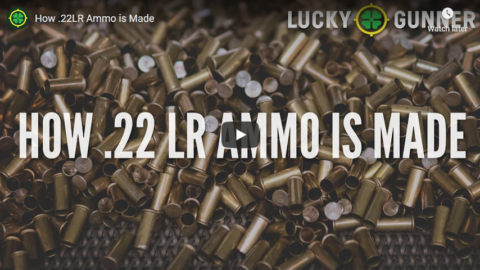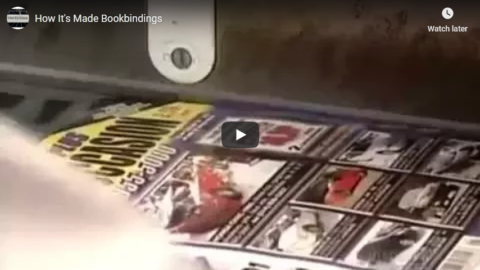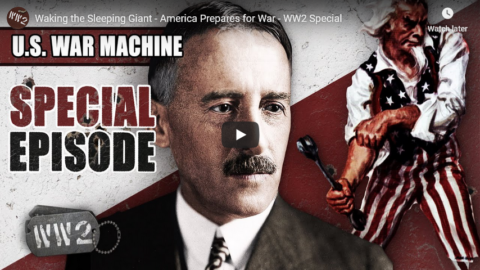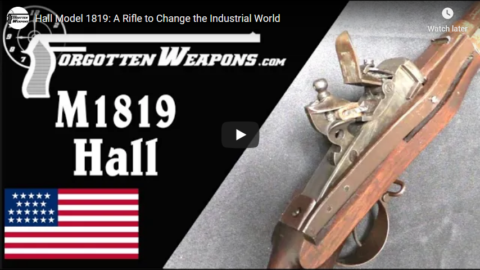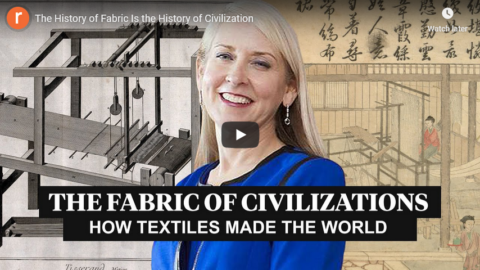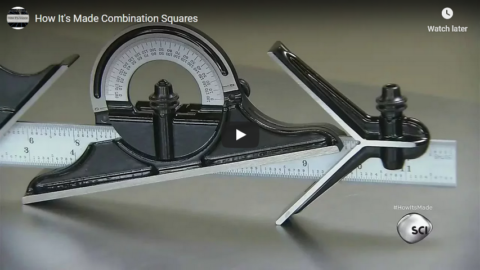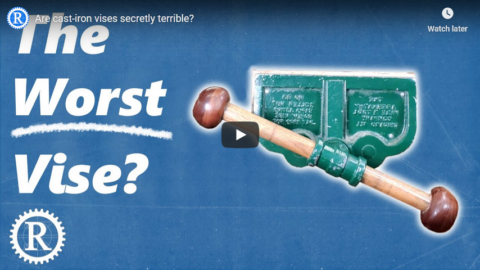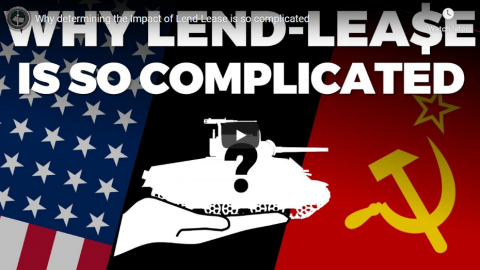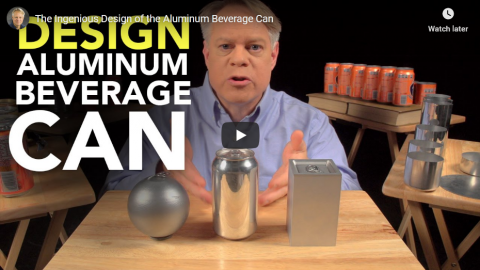So, start with the very basics. Human desires and needs are unlimited – that’s an assumption but a reasonable one. There’re some number of people on the planet. This provides us with a lot of human labour but not an unlimited amount. Thus labour is a scarce or economic resource – and we’ve not enough of it to sate all human desires and wants.
OK, so, now we use machines to do some jobs that were previously done by humans. Imagine that this new technology actually required more human labour – that it created new jobs in greater volume than those it destroys. Say, the tractor and combine harvester industry needs more people in it than we used to use to cut the crops by hand. We’ve just made ourselves poorer. We used to have some amount of grain through the labour of some number of people. We’ve now got that grain but by using the labour of more people. We’ve used more of our scarce resource and we’re now poorer by the loss of what they used to make when not hand cutting grain but now no longer are by making tractors.
What makes us richer is if the tractor industry has record production statistics while using less labour than the hammer and sickle. That means that some human labour is now free to go off and try to sate a human desire or want for something other than grain. Ballet dancing for example. We’re now richer – tractors and combine harvesters have made us richer – by whatever value we put on more ballet dancing.
The entire point of any form of automation is to destroy jobs so as to free up that labour to do something else. The new technology doesn’t create jobs, it allows other jobs to be done.
The only point at which this fails is if human needs and desires aren’t unlimited. Which means that we might be able to provide everything that everyone wants without us all working. Which doesn’t really sound like much of a problem really.
Tim Worstall, “As Usual, World Economic Forum Gets Robots And AI Wrong Over Jobs”, Continental Telegraph, 2018-09-18.
February 5, 2021
QotD: Misunderstanding the threat/promise of robotics and AI
January 23, 2021
How .22LR Ammo is Made
Lucky Gunner Ammo
Published 16 Apr 2020We were offered a rare glimpse into Federal’s rimfire plant in Anoka, MN to watch how .22 LR ammunition is made. We all know the basic components involved — each cartridge consists of a case with primer, propellant, and a bullet. Watching them all come together on a massive scale with a choreographed dance of modern automated machinery is a surprisingly gratifying experience.
Special thanks to our friends at Federal Ammunition and Vista Outdoor for the invitation!
Support our channel. Buy ammo from Lucky Gunner!
January 19, 2021
Milton Friedman’s “Shareholder Doctrine” is alive and well
Satish Bapanapalli on why Friedman’s doctrine helps to explain why auto manufacturers spend so much money to crash-test their vehicles:

Ford Focus versus Ford Explorer crash test IIHS by Brady Holt is licensed under CC BY 3.0
Of all of Friedman’s great ideas, the Shareholder Doctrine is perhaps the most misunderstood by academics, in large part because many left-leaning intellectuals use the good old straw man argument to misleadingly caricature the doctrine as a “profit-at-all-cost system regardless of human toll.”
Case in point, the latest sermon by some reputed academics published in Fortune magazine: “50 years later, Milton Friedman’s shareholder doctrine is dead.”
This one has all the usual tropes, including the claim that “Friedman … urged business to use its muscle to reduce the effectiveness of unions, blunt environmental and consumer protection measures, and defang antitrust law. He sought to reduce consideration of human concerns [such as] treat[ing] workers, consumers, and society fairly.”
Friedman said no such things. Read it for yourselves. Friedman’s primary argument was that it is not the job of the officers of a corporation (corporate executives) to fight for social causes. The officers must only act in accordance with the shareholder’s wishes, “which generally will be to make as much money as possible while conforming to the basic rules of the society, both those embodied in law and those embodied in ethical custom.”
Of course, in some cases, the shareholders may themselves encourage charitable spending and other corporate policies and activities deemed “socially responsible.” In which case, executives are tasked with finding the best ways to fulfill those objectives. In his article, Friedman clearly demonstrates why this is a logically precise position.
The scolds, who authored the Fortune article, put forth an alternative. Their “three pillars” proposal advocates for laws to be imposed on corporations with vague and fuzzy objectives (note the italicized words) such as “responsible corporate citizen[ship]”, “treating workers … fairly“, “avoiding externalities, such as carbon emissions, that cause unreasonable or disproportionate harm to others”, and corporations should make profits by “benefiting others.” To rub foolishness on the vagueness, the proposal calls for putting the onus on the corporations to measure and demonstrate progress on these fuzzy objectives! To put it in Friedman’s own words, such proposals “are notable for their analytical looseness and lack of rigor.”
January 18, 2021
How It’s Made — Bookbindings
January 13, 2021
Waking the Sleeping Giant – America Prepares for War – WW2 Special
World War Two
Published 12 Jan 2021As the United States enters World War Two, a huge industrial giant awakens from hibernation. This episode covers industrial mobilization plans, their execution, and their potential.
Join us on Patreon: https://www.patreon.com/TimeGhostHistory
Or join The TimeGhost Army directly at: https://timeghost.tvFollow WW2 day by day on Instagram @ww2_day_by_day – https://www.instagram.com/ww2_day_by_day
Between 2 Wars: https://www.youtube.com/playlist?list…
Source list: http://bit.ly/WW2sourcesHosted by: Indy Neidell
Written by: Joram Appel
Director: Astrid Deinhard
Producers: Astrid Deinhard and Spartacus Olsson
Executive Producers: Astrid Deinhard, Indy Neidell, Spartacus Olsson, Bodo Rittenauer
Creative Producer: Maria Kyhle
Post-Production Director: Wieke Kapteijns
Research by: Joram Appel
Edited by: Karolina Dołęga
Sound design: Marek Kamiński
Map animations: Eastory (https://www.youtube.com/c/eastory)Colorizations by:
Dememorabilia – https://www.instagram.com/dememorabilia/
Norman Stewart – https://oldtimesincolor.blogspot.com/Sources:
– Library of Congress
– National Archives NARA
– Picture of the first class of the Army Industrial College from National Defense University
– FDR Presidential Library & Museum
– Icons from the Noun Project: Artillery by Creative Mania, Douglas SBD Dauntless by Lluisa Iborra, Man by Milinda Courey, Factory Workers by Gan Khoon Lay, Soldier by Wonmo Kang, Old Car by Andri Graphic, progress 20% & 40% by Roberto Chiaveri.Soundtracks from Epidemic Sound:
– “The Inspector 4” – Johannes Bornlöf
– “London” – Howard Harper-Barnes
– “Break Free” – Fabien Tell
– “Last Point of Safe Return” – Fabien Tell
– “Force Matrix” – Jon BjorkArchive by Screenocean/Reuters https://www.screenocean.com.
A TimeGhost chronological documentary produced by OnLion Entertainment GmbH.
December 26, 2020
The Matchbox Car Story
Little Car
Published 27 Jan 2020Matchbox is a popular British toy brand which was introduced by Lesney Products in 1953, and is now owned by Mattel, Inc. The brand was given its name because the original die-cast Matchbox toys were sold in boxes similar to those in which matches were sold. The brand grew to encompass a broad range of toys, including larger scale die-cast models, plastic model kits, and action figures.
During the 1980s, Matchbox began to switch to the more conventional plastic and cardboard “blister packs” that were used by other die-cast toy brands such as Hot Wheels. The box style packaging was re-introduced for the collectors’ market in recent years, particularly with the release of the “35th Anniversary of Superfast” series in 2004.
The script for this video comes from Wikipedia:
https://en.wikipedia.org/wiki/Matchbo…
If you find issues with the content, I encourage you to update the Wikipedia article, so everyone can benefit from your knowledge.
If you like these video and want to support me from just $1 or 80p a month at https://www.patreon.com/bigcar
#matchboxcars
December 14, 2020
Hall Model 1819: A Rifle to Change the Industrial World
Forgotten Weapons
Published 7 Sep 2020http://www.patreon.com/ForgottenWeapons
https://www.floatplane.com/channel/Fo…
Cool Forgotten Weapons merch! http://shop.bbtv.com/collections/forg…
John Hall designed the first breechloading rifle to be used by the United States military, and the first breechloader issued in substantial numbers by any military worldwide. His carbines would later be the first percussion arms adopted by any military force. Hall developed a breechloading flintlock rifle in 1811, had it tested by the military in 1818, and formally adopted as a specialty arm in 1819.
Hall’s contribution actually goes well beyond having a novel and advanced rifle design. He would be the first person to devise a system of machine tools capable of producing interchangeable parts without hand fitting, and this advance would be the foundation of the American system of manufacturing that would revolutionize industry worldwide. Hall did this work at the Harpers Ferry Arsenal, where he worked from 1819 until his death in 1841.
I plan to expand on the details of a variety of Hall rifle models in future videos, and today is meant to be an introduction to the system. Because it was never a primary arm in time of major war, Hall is much less well recognized than he should be among those interested in small arms history.
Contact:
Forgotten Weapons
6281 N. Oracle #36270
Tucson, AZ 85740
November 24, 2020
The History of Fabric Is the History of Civilization
ReasonTV
Published 23 Nov 2020Virginia Postrel’s new book explores economics, politics, and technology through textiles.
——————
Full text and links: https://reason.com/video/2020/11/23/t…Follow us on Twitter: https://twitter.com/reason
Reason is the planet’s leading source of news, politics, and culture from a libertarian perspective. Go to reason.com for a point of view you won’t get from legacy media and old left-right opinion magazines.
—————-The Fabric of Civilization: How Textiles Made the World, a new book by former Reason editor in chief Virginia Postrel, is a rich, endlessly fascinating history of the remarkable luck, invention, and innovation that made our fabric-rich world possible.
The book aims to make the mundane miraculous. Consider cotton. Most of the cotton we grow today is descended in part from a plant species that evolved in Africa and somehow got over to what is now Peru, where it mixed with New World strains.
“The fact that we have cotton at all, that it exists anywhere, is amazing,” says Postrel. “It happened long before there were human beings, but much more recently than when the continents were together. So we don’t know. It could have gotten caught up in a hurricane. It could have floated on a piece of pumice. So it’s this random, very unlikely happening that had tremendous world-changing consequences.”
The story of textiles is rife with attempts at protectionism and prohibition. In 17th and 18th century Europe, countries banned the importation of super-soft, super-colorful cotton prints from India known as calicos because they threatened domestic producers of everything from lower-quality cotton fabric to luxury silks. “For 73 years, France treated calico the way the U.S. treats cocaine,” Postrel says. “There was this huge amount of smuggling, and they were constantly ratcheting up the penalties [so] that they got quite grotesque, at least for the major traffic.” Some of “the earliest writings of classical liberalism are in this context, people saying not only is this not working, but … it is unjust to be sentencing people to the galleys in order to protect silk makers’ profits.”
Postrel also documents how the Luddites, the 19th century English textile workers famous for smashing the power looms threatening to put them out of work, owed their jobs to an earlier technological breakthrough: the spinning machines that emerged in the late 1700s.
“If you go back to that earlier period, when spinning machines were introduced, the same thing happened,” she says. “They had their own period of rebelling against the new technologies and saying they’re putting people out of work.”
The book also upends some contemporary myths, such as the claim that commercial production of hemp for clothing was a casualty of the war on drugs. “Hemp historically was a very coarse kind of fabric for poor people who didn’t have an alternative,” says Postrel. “It was replaced by cotton for good reasons. Cotton was also affordable, but it was soft and washable and just a much better fabric.”
“Human beings live in history and we inherit the legacies, positive and negative, of that history,” says Postrel, whose previous books include The Power of Glamour, The Substance of Style, and The Future and Its Enemies. Discussing the large themes of her work she says, “All you can do is start from where you are and try to do better from where you are.”
Narrated by Nick Gillespie. Edited by Isaac Reese.
Music: “Thoughts,” by ANBR
Photos: World History Archive/Newscom; The Print Collector Heritage Images/Newsroom; The “Réale” returning to port, Med/CC BY-SA 3.0; Smithsonian National Museum of African American History and Culture/CC0; Battle of Grand Port, Rama/Wikimedia Commons/CC BY-SA 2.0 FR; Fine Art Images Heritage Images/Newscom; Seton, M., Müller, R., Zahirovic, S., Gaina, C., Torsvik, T., Shephard, G., Talsma, A., Gurnis, M., Turner, M., Maus, S., and Chandler, M., 2012, Global continental and ocean basin reconstructions since 200 Ma: Earth-Science Reviews, v. 113, no. 3-4, p. 212-270
November 15, 2020
London’s wool and cloth trade fuelled massive growth in the city’s population after 1550
In the latest Age of Invention newsletter, Anton Howes traces the rise and fall of the late Medieval wool trade and its rebirth largely thanks to an influx of Dutch and Flemish clothmakers fleeing the wars in the Low Countries after 1550:

The Coat of Arms of The Worshipful Company of Woolmen — On a red background, a silver woolpack, with the addition of a crest on a wreath of red and silver bearing two gold flaxed distaffs crossed like a saltire and the wheel of a gold spinning wheel.
The Worshipful Company of Woolmen is one of the Livery Companies in the City of London. It is known to have existed in 1180, making it one of the older Livery Companies of the City. It was officially incorporated in 1522. The Company’s original members were concerned with the winding and selling of wool; presently, a connection is retained by the Company’s support of the wool industry. However, the Company is now primarily a charitable institution.
The Company ranks forty-third in the order of precedence of the Livery Companies. Its motto is Lana Spes Nostra, Latin for Wool Is Our Hope.
Wikipedia.
… it was one thing to be able to reach these new southern markets, and another thing to have something to sell in them. For the shift in the markets for wool cloth exports also required major changes in the kinds of cloth produced. In this regard, London may well have been a direct beneficiary of the 1560s-80s troubles in the Low Countries that had caused Antwerp’s fall, because thousands of skilled Flemish and Dutch clothmakers fled to England. In particular, these refugees brought with them techniques for making much lighter cloths than those generally produced by the English — the so-called “new draperies”, which could find a ready market in the much warmer Mediterranean climes than the traditional, heavy woollen broadcloths.
The introduction of the new draperies was no mere change in style, however. They were almost a completely different kind of product, involving different processes and raw materials. The traditional broadcloths were “woollens”. That is, they were made from especially fine, short, and curly wool fibres — the type that English sheep were especially famous for growing — which were then heavily greased in butter or oil in preparation for carding, whereby the fibres were straightened out and any knots removed (because of all the oil, in the Low Countries the cloths were known as the wet, or greased draperies). The oily, carded wool was then spun into yarn, and typically woven into a broad cloth about four metres wide and over thirty metres long. But it was still far from ready. The cloth had to be put in a large vat of warm water, along with some urine and a particular kind of clay, and was then trodden by foot for a few days, or else repeatedly compacted by water-powered machinery. This process, known as fulling, scoured the cloth of all the grease and shrunk it, compacting the fibres so that they began to interlock and enmesh. Any sign of the cloth being woven thus disappeared, leaving a strong, heavy, and felt-like material that was, as one textile historian puts it, “virtually indestructible”. To finish, it was then stretched with hooks on a frame, to remove any wrinkles and even it out, and then pricked with teasels — napped — to raise any loose fibres, which were then shorn off to leave it with a soft, smooth, sometimes almost silky texture. Woollens may have been made of wool, but they were no woolly jumpers. They were the sort of cloth you might use today to make a thick, heavy and luxuriant jacket, which would last for generations.
Yet this was not the sort of cloth that would sell in the much warmer south. The new draperies, introduced to England by the Flemish and Dutch clothworkers in the mid-sixteenth century, used much lower-quality, coarser, and longer wool. Later generally classed as “worsteds”, after the village of Worstead in Norfolk, they were known in the Low Countries as the dry, or light draperies. They needed no oil, and the long fibres could be combed rather than carded. Nor did they need any fulling, tentering, napping, or shearing. Once woven, the cloth was already strong enough that it could immediately be used. The end product was coarser, and much more prone to wear and tear, but it was also much lighter — just a quarter the weight of a high-quality woollen. And the fact that the weave was still visible provided an avenue for design, with beautiful diamond, lozenge, and other kinds of patterns. The new draperies, which included worsteds and various kinds of slightly heavier worsted-woollen hybrids, as well as mixes with other kinds of fibre like silk, linen, Syrian cotton, or goat hair, thus came in a dazzling number of varieties and names: from tammies or stammets, to rasses, bays, says, stuffs, grograms, hounscots, serges, mockadoes, camlets, buffins, shalloons, sagathies, frisadoes, and bombazines. To escape the charge that the new draperies were too flimsy and would not last, some varieties were even marketed as durances, or perpetuanas.
Curiously, however, while the shift from woollens to worsted saved on the costs of oiling, fulling, and finishing, it was significantly more labour-intensive when it came to spinning — even resulting in a sort of technological reversion. Given the lack of fulling, the strength of the thread mattered a lot more for the cloth’s durability, and the yarn had to be much finer if the cloth was to be light. The spinning thus had to be done with much greater care, which made it slower. Spinners typically gave up using spinning wheels, instead reverting to the old method of using a rock and distaff — a technique that has been used since time immemorial. Albeit slower, the rock and distaff gave them more control over the consistency and strength of the ever-thinner yarn. For the old, woollen drapery, processing a pack of wool into cloth in a week would employ an estimated 35 spinners. For the new, lighter worsted drapery it would take 250. As spinning was almost exclusively done by women, the new draperies provided a massive new source of income for households, as well as allowing many spinsters or widows to support themselves on their own. Indeed, an estimated 75% of all women over the age of 14 might have been employed in spinning to produce the amounts of cloth that England exported and consumed. Some historians even speculate that by allowing women to support themselves without marrying, it may have lowered the national fertility rate.
This spinning, of course, was not done in London. It was largely concentrated in Norfolk, Devon, and the West Riding of Yorkshire. But the new draperies provided employment of another, indirect kind. As a product that was saleable in warmer climes it could be exchanged for direct imports of all sorts of different luxuries, from Moroccan sugar, to Greek currants, American tobacco (imported via Spain), and Asian silks and spices (initially largely imported via the eastern Mediterranean). The English merchants who worked these luxury import trades were overwhelmingly based in London, and had often funded the voyages of exploration and embassies to establish the trades in the first place, putting them in a position to obtain monopoly privileges from the Crown so that they could restrict domestic competition and protect their profits. Unsurprisingly, as they imported everything to London, it also made sense for them to export the new draperies from London too.
Thus, despite losing the concentrating influence of nearby Antwerp, London came to be the principal beneficiary of England’s new and growing import trades, allowing it to grow still further. The city began to carve out a role for itself as Europe’s entrepôt, replacing Antwerp, and competing with Amsterdam, as the place in which all the world’s rarities could be bought (and from which they could increasingly be re-exported). Indeed, English merchants were apparently happy to sell wool cloth at below cost-price in markets like Spain or Turkey — anything to buy the luxury wares that they could monopolise back home.
November 14, 2020
How It’s Made – Combination Squares
How Its Made
Published 11 Jan 2016How It’s Made season 27
Combination Squares
#HowItsMade episode 9
October 22, 2020
Are cast-iron vises secretly terrible?
Rex Krueger
Published 21 Oct 2020Cast-iron vises are convenient and popular, but there might be some much better options.
More video and exclusive content: http://www.patreon.com/rexkrueger
Build my angled Leg Vise: https://www.youtube.com/watch?v=eiwtB…
Get the plans: https://www.rexkrueger.com/store/xngn…Learn about my Joiner’s Bench: https://www.youtube.com/watch?v=zcq1L…
Get the complete plan bundle WITH the leg vise: https://www.rexkrueger.com/store/join…Sign up for Fabrication First, my FREE newsletter: http://eepurl.com/gRhEVT
Wood Work for Humans Tool List (affiliate):
*Cutting*
Gyokucho Ryoba Saw: https://amzn.to/2Z5Wmda
Dewalt Panel Saw: https://amzn.to/2HJqGmO
Suizan Dozuki Handsaw: https://amzn.to/3abRyXB
(Winner of the affordable dovetail-saw shootout.)
Spear and Jackson Tenon Saw: https://amzn.to/2zykhs6
(Needs tune-up to work well.)
Crown Tenon Saw: https://amzn.to/3l89Dut
(Works out of the box)
Carving Knife: https://amzn.to/2DkbsnM
Narex True Imperial Chisels: https://amzn.to/2EX4xls
(My favorite affordable new chisels.)
Blue-Handled Marples Chisels: https://amzn.to/2tVJARY
(I use these to make the DIY specialty planes, but I also like them for general work.)*Sharpening*
Honing Guide: https://amzn.to/2TaJEZM
Norton Coarse/Fine Oil Stone: https://amzn.to/36seh2m
Natural Arkansas Fine Oil Stone: https://amzn.to/3irDQmq
Green buffing compound: https://amzn.to/2XuUBE2*Marking and Measuring*
Stockman Knife: https://amzn.to/2Pp4bWP
(For marking and the built-in awl).
Speed Square: https://amzn.to/3gSi6jK
Stanley Marking Knife: https://amzn.to/2Ewrxo3
(Excellent, inexpensive marking knife.)
Blue Kreg measuring jig: https://amzn.to/2QTnKYd
Round-head Protractor: https://amzn.to/37fJ6oz*Drilling*
Forstner Bits: https://amzn.to/3jpBgPl
Spade Bits: https://amzn.to/2U5kvML*Work-Holding*
Orange F Clamps: https://amzn.to/2u3tp4X
Screw Clamp: https://amzn.to/3gCa5i8Get my woodturning book: http://www.rexkrueger.com/book
Follow me on Instagram: @rexkrueger
June 27, 2020
QotD: The cost of military equipment
Major military hardware is produced in only limited quantities and involves a massive amount of research, development, and engineering before the first unit goes into service. Because of this, the companies that build it are rarely willing to take the risk of paying for the development themselves and recovering the cost from the units that they sell. What if the customer suddenly decides to cut their buy in half? To avoid this problem, development is paid for by the customer separately from procurement of each item. Well, more or less. The actual answer varies with each particular system, accounting method, and time of the month. But in general, costs break down that way.
So why does this cause so much confusion? Well, it all has to do with what gets reported. Someone who is trying to make the case that some program is outrageously expensive and should be cancelled is going to lump together development and procurement, divide by the number of systems involved, and then publish the resulting number. But, particularly when we’re discussing the cost of a system about to enter production, that’s very different from the actual numbers. To give a well-known example, the B-2 is generally reputed to have cost about $2 billion/plane in the 90s. However, this is the total program cost divided by the 21 airframes. If we’d decided to buy 22 B-2s instead of the 21 we did buy, the extra plane would have cost only $700 million or so. Admittedly, the B-2 is a rather extreme case, and usually the share of R&D cost is less than the procurement (flyaway) cost, but it’s illustrative of the power of this kind of framing.
“bean”, “Military Procurement – Pricing”, Naval Gazing, 2018-03-09.
June 14, 2020
The Iconic American WW2 Thompson: the M1A1
Forgotten Weapons
Published 15 Oct 2018https://www.forgottenweapons.com/the-…
http://www.patreon.com/ForgottenWeapons
Cool Forgotten Weapons merch! http://shop.bbtv.com/collections/forg…
While the US Army was satisfied with the Thompson as a fighting weapon in World War Two, it was most certainly not happy with the gun’s exorbitant price tag. The Thompson was a very expensive gun, and the Army wanted to see that change. In March of 1942, engineers at the Savage factory submitted a simplified version for Army consideration, and it was accepted and adopted the very next month. Savage would transition from M1928A1 production to the new M1 pattern in June and July of 1942.
This new M1 Thompson had eliminated at last the unique and unnecessary Blish lock system in favor of a simple blowback action delayed only by bolt mass. In addition to greatly simplifying the production of bolt components, this also allowed the receiver internal shape to be much simplified. A further simplification would follow shortly, as the hammer and floating firing pin were replaced by a fixed firing pin milled into the bolt face in October of 1942 – this new type being designated the M1A1. Another 715,000 M1 and M1A1 Thompsons would be produced by Savage and Auto-Ordnance by February of 1944, when the Thompson was finally replaced by the yet cheaper M3 “Grease Gun”.
This is the fourth in a 5-part series on the development of the Thompson…
Note: I refer to the M1A1 in this video as a transferrable gun; it is actually a pre-May dealer sample. Sorry!
Contact:
Forgotten Weapons
PO Box 87647
Tucson, AZ 85754If you enjoy Forgotten Weapons, check out its sister channel, InRangeTV! http://www.youtube.com/InRangeTVShow
June 7, 2020
Why determining the Impact of Lend-Lease is so complicated
Military History Visualized
Published 14 Aug 2018Determining the impact of the Western Aid that was provided to the Soviet Union in the Second World War is quite controversial. This aid was provided under the Lend-Lease act, as such it is usually just called Lend-Lease. The majority of the support was provided by the United States, yet other countries like the United Kingdom and Canada aided the Soviet Union as well.
Thank you to VonKickass for the Thumbnail Design!
»» SUPPORT MHV ««
» patreon – https://www.patreon.com/join/mhv
» paypal donation – https://www.paypal.com/cgi-bin/webscr…»» MERCHANDISE – SPOILS OF WAR ««
» shop – https://www.redbubble.com/people/mhvi…»» SOCIAL MEDIA ««
» twitter – https://twitter.com/MilHiVisualized
» twitch – https://www.twitch.tv/militaryhistory…» SOURCES «
Boris V. Sokolov: “The role of lend‐lease in Soviet military efforts, 1941–1945”, The Journal of Slavic Military Studies, 7:3 (1994) p. 567-586
Hill, Alexander: The Red Army and the Second World War. Armies of the Second World War. Cambridge University Press: Cambridge, UK, 2017.
Glantz, David M.; House, Jonathan M.: When Titans Clashed. How the Red Army stopped Hitler. Revised and Expanded Edition. University Press of Kansas: USA, 2015
Harrison, Mark: THE SOVIET ECONOMY AND RELATIONS WITH THE UNITED STATES AND BRITAIN, 1941-1945, Draft 25 August, 1993
Hill, Alexander: “British Lend Lease Aid and the Soviet War Effort, June 1941 June 1942”, in: The Journal of Military History, Vol. 71, No. 3 (Jul., 2007), pp. 773-808
Cambridge History of the Second World War. Volume 1: Fighting the War. Cambridge University Press: UK (2015)
Broadberry, Stephen; Howlett, Peter: “The United Kingdom: ‘Victory at all costs'”, in: Harrison, Mark (ed.): The Economics of World War II. Cambridge University Press: UK (1998), p. 43-80
Strydwolf: Lend-Lease to Soviet Union, significance, impact and myths
Protocol and Area Information Staff of the U.S.S.R. Branch and the Division of Research and Reports: REPORT ON WAR AID FURNISHED BY THE UNITED STATES TO THE U.S.S.R, November 28, 1945
Harrison, Mark: “The USSR and Total War: Why Didn’t the Soviet Economy Collapse in 1942?” In: Chickering, Roger (ed.); Förster, Stig (ed.); Greiner, Bernd (ed.): A World at Total War: Global Conflict and the Politics of Destruction, 1939-1945, Cambridge: Cambridge University Press (2005), p. 137-156.
Tooze, Adam: The Wages of Destruction. The Making and Breaking of the Nazi Economy. Penguin Books: United Kingdom (2006).
Overy, Richard: Why the Allies Won. Pimlico: London, UK (2006).
Higham, Robin (ed.); Kagan, Frederick W. (ed.): The Military History of the Soviet Union. Palgrave: New York, 2002
Havlat, Denis: Western aid for the Soviet Union during World War II, Wien, 2015 (Master Thesis)
» DATA CHAIN «
Made with Natural Earth. Free vector and raster map data @ naturalearthdata.com.» CREDITS & SPECIAL THX «
Song: Ethan Meixsell – “Demilitarized Zone”
May 25, 2020
The Ingenious Design of the Aluminum Beverage Can
engineerguy
Published 14 Apr 2015Bill details the engineering choices underlying the design of a beverage can He explains why it is cylindrical, outlines the manufacturing steps needed to created the can, notes why the can narrows near it lid, show close ups of the double-seam that hold the lid on, and details the complex operation of the tab that opens the can.

